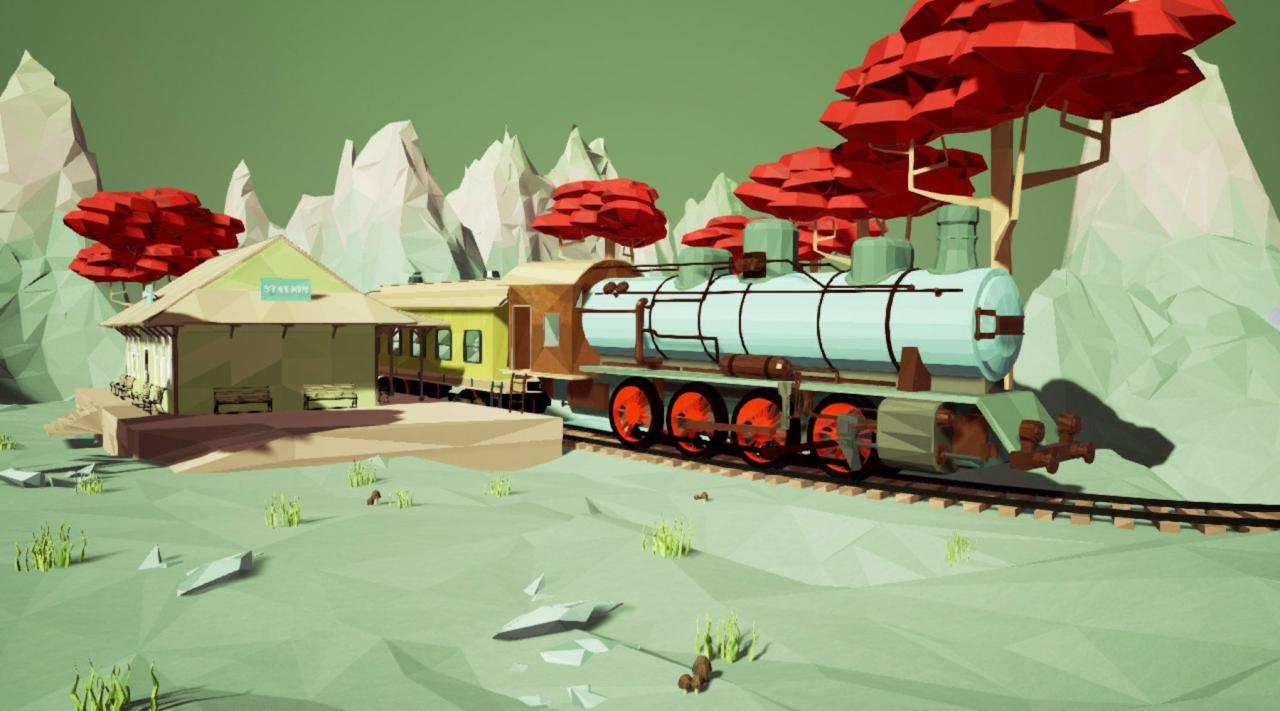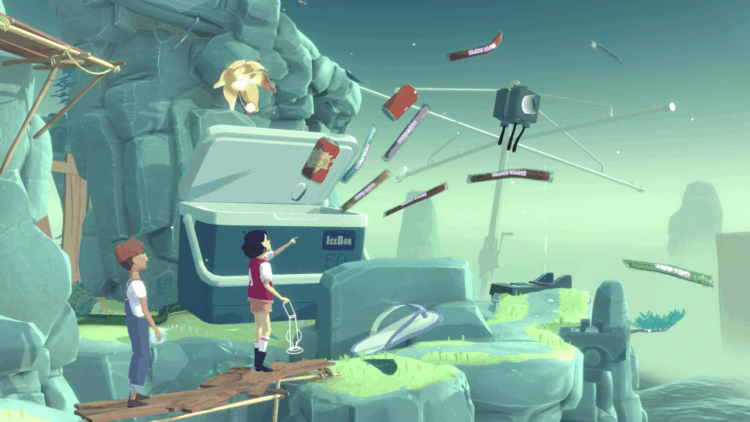For the entirety of human history, storytelling has been a largely passive experience. We sat at the fire, in the theater, or on the couch, absorbing narratives crafted for us by a storyteller. Video games changed this dynamic by introducing a crucial new element: agency. For the first time, the audience could influence the outcome. Yet, for decades, this agency has operated within carefully constructed, finite boundaries. We chose path A or path B, saved a character or let them perish, but always within a rigid framework designed by a developer.
Here in 2025, we stand at the precipice of the most profound shift in narrative entertainment since the invention of the moving image. The age of the scripted story is ending. The future of interactive storytelling is not about offering more branches on a pre-written tree; it’s about giving players an entire forest to grow themselves. Fueled by exponential advancements in artificial intelligence, machine learning, and systemic world simulation, games are evolving from interactive stories into living, breathing narrative engines.
This is the dawn of the AI Storyteller—a digital “Dungeon Master” capable of weaving truly unique, personal, and endlessly replayable sagas in real-time. This article explores this revolution in detail, dissecting the technologies that are making it possible, the ways in which game worlds are becoming active characters, and how the very definition of a “story” in a digital medium is being fundamentally rewritten.
Moving Beyond the Illusion of Choice
To understand where we are going, we must first appreciate the limitations of where we have been. The “golden age” of interactive storytelling, defined by masterpieces like The Witcher 3, Mass Effect, and Red Dead Redemption 2, perfected the art of the branching narrative. These games presented players with momentous choices that had tangible, often heart-wrenching, consequences. They gave us the powerful illusion of being the masters of our own destiny.
However, it remained an illusion. Behind the curtain, every potential outcome, every line of dialogue, and every character reaction was meticulously scripted and coded by a team of writers and designers. While masterful, this approach has inherent limitations:
- Finite Possibilities: The number of branches is ultimately limited by development time and budget. A player can never do something the developers didn’t anticipate, breaking the immersion the moment they push against the invisible walls of the script.
- Resource Intensive: Creating a compelling branching narrative is astronomically expensive and time-consuming, which is why only a handful of studios can achieve it on a grand scale.
- Repetitive Experiences: On a second or third playthrough, the magic fades. The choices are known, the outcomes are mapped, and the feeling of genuine discovery is lost.
The modern player, having grown up in increasingly complex and systemic game worlds, now craves a deeper level of agency. They don’t just want to choose the hero’s path; they want to see the world itself bend and react to their every action, no matter how small or unpredictable. This is a demand that scripted narratives can no longer satisfy.
The AI Storyteller: Your Personal Narrative Director
The solution to the constraints of scripted narrative is not to write more scripts, but to create a system that can write its own. Enter the AI Storyteller, a sophisticated network of interconnected AI systems that function as a game’s central intelligence, dynamically generating narrative content in response to the player’s unique journey. This isn’t science fiction; the foundational technologies are already being implemented and refined. The AI Storyteller’s role can be broken down into several key functions:
A. Generative AI and Living Dialogue The most immediate and impactful change is the death of the dialogue wheel. Powered by advanced Large Language Models (LLMs)—the same technology behind sophisticated chatbots—NPCs are becoming truly conversational. Instead of selecting a pre-written line, players can use their own voice or text to ask anything they want. The AI, understanding the context of the world and the NPC’s unique personality and memories, will generate a relevant, character-appropriate response in real-time.
An NPC tavern owner won’t just repeat the same three lines of generic gossip. They will remember you. They might ask how your quest to find the Sunken Citadel went, comment on the new armor you’re wearing, or refuse to speak to you because you caused a bar fight last week. This creates a level of social immersion and realism that makes the world feel genuinely inhabited, transforming NPCs from robotic information dispensers into believable virtual people.
B. Procedural Narrative Generation Procedural generation has been used for years to create game maps and loot, but its application to storytelling is the real game-changer. An AI Storyteller can weave entire plotlines, quests, and character arcs from a set of narrative rules and world events. For example, the AI might observe that:
- A plague is spreading in the southern farmlands (a systemic world event).
- The player has a high alchemy skill.
- The player has previously helped the local Healers’ Guild.
From these data points, the AI can procedurally generate a multi-stage questline where the Healers’ Guild leader seeks out the player to help them research a cure. This quest would not exist in the game’s code until the specific conditions of the world and the player’s history aligned to create it. This ensures that no two players will have the exact same journey, as their stories are a direct result of their unique interactions with the simulated world.
C. Emergent Objectives and Dynamic Goals Traditional games present a curated quest log: “Go here, kill ten boars, collect the reward.” The AI Storyteller replaces this with emergent objectives that arise organically from the world’s simulation. If a player’s actions lead to the collapse of a local mining company, the town’s economy might falter. There is no “quest” to fix it, but the objective emerges naturally: the player could invest to reopen the mine, establish a new trade route, or even exploit the destitute townsfolk.
The goals are not given to the player; they are discovered. This fosters a profound sense of agency, as players are not just completing a developer’s to-do list but are actively identifying and solving problems within a living world. The narrative becomes the cumulative story of the consequences of the player’s actions.
The World as an Active Protagonist

In this new era of storytelling, the game world itself graduates from being a passive backdrop to an active participant in the narrative. The setting is no longer just a stage; it’s one of the main characters, with its own motivations and behaviors that constantly shape the player’s story.
Persistent and Evolving Environments The actions you take will leave permanent, lasting scars—or boons—on the world. A forest you set ablaze during a battle will, over years of in-game time, slowly regrow, first with small shrubs and then with young trees, creating a visible history of your deeds. A bridge you destroy to stop an invading army will remain a collapsed ruin, forcing trade caravans to reroute and potentially leading to the economic decline of a nearby village. This persistence creates a powerful sense of legacy. The world becomes a canvas, and the story is the mural players paint upon it, one action at a time.
Systemic Societal Simulation The AI Storyteller doesn’t just manage the player; it manages the entire world. Factions have goals, nations have political climates, and economies react to supply and demand. Two neighboring kingdoms might go to war completely independent of the player, based on simulated resource disputes and ideological friction. The player is not necessarily the center of this universe. They are a powerful agent, a catalyst, but the world continues to live and breathe without them. The story then becomes about finding your place within these massive, interlocking systems—siding with a faction, profiting from the chaos of war, or even attempting to broker peace between nations.
The Player’s Emotional Footprint: A Bespoke Narrative

The final and most intimate frontier of interactive storytelling is personalization based on the player’s psychological and emotional state. The AI Storyteller will not only react to what you do in the game, but also to how you do it, and potentially, how you feel about it.
Sentiment Analysis and Playstyle Profiling By analyzing a player’s choices, the speed of their decisions, and their typical methods for problem-solving (e.g., aggression, stealth, diplomacy), the AI can build a psychological profile. Is this player a ruthless pragmatist? A compassionate hero? A chaotic neutral agent? The narrative can then adapt to challenge or reflect this profile. A compassionate player might find themselves faced with increasingly difficult moral quandaries, while a ruthless player might see the world become darker and more cynical in response to their actions, with NPCs becoming more fearful and untrusting.
The Future: Biometric Feedback Looking ahead, the integration of biometric data from controllers, headsets, or other peripherals will create a direct feedback loop between the player’s emotional state and the game. Imagine playing a horror game that can detect your rising heart rate through the controller’s sensors. The AI Storyteller could react in several ways: it might intensify the horror to maximize the thrill, or it might subtly introduce a moment of calm to prevent the player from becoming overwhelmed. A story that can adapt to your fear, excitement, or frustration in real-time is the ultimate form of personal, interactive narrative.
Conclusion: The Story of You
The future of interactive storytelling is a departure from the authored narrative and a bold leap into the realm of the simulated experience. The power of the AI Storyteller lies in its ability to relinquish control, to build a world with a rich set of rules and then set the player free within it. The narrative is no longer a pre-determined path but the unique, emergent, and unrepeatable sum of a player’s choices and the world’s reactions.
We are leaving the age of being told a story and entering the age of creating our own. The games of the future will not contain one great story; they will contain millions of them, each one as unique as the player living it. This is the ultimate promise of interactive entertainment: not just to play a hero, but to have a world recognize you as one, and to have the story it tells be, unequivocally, the story of you.












